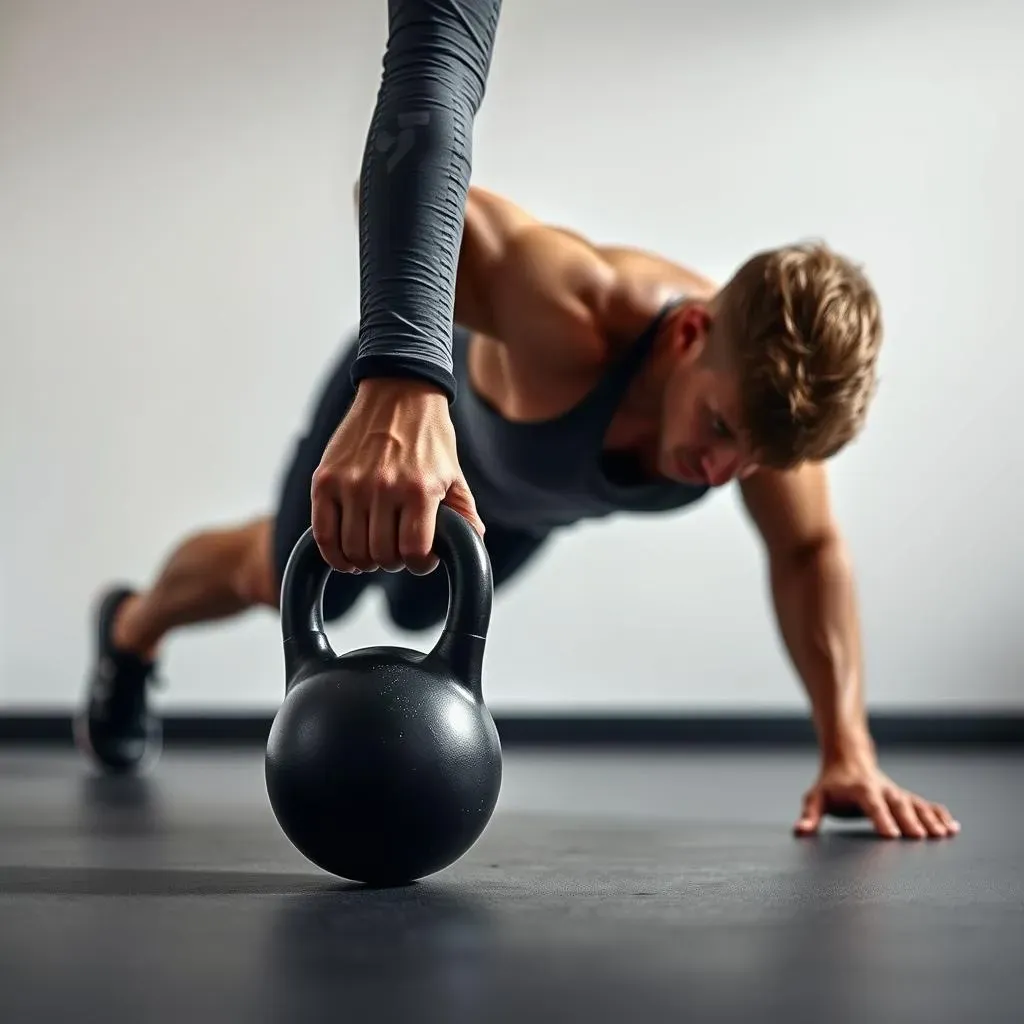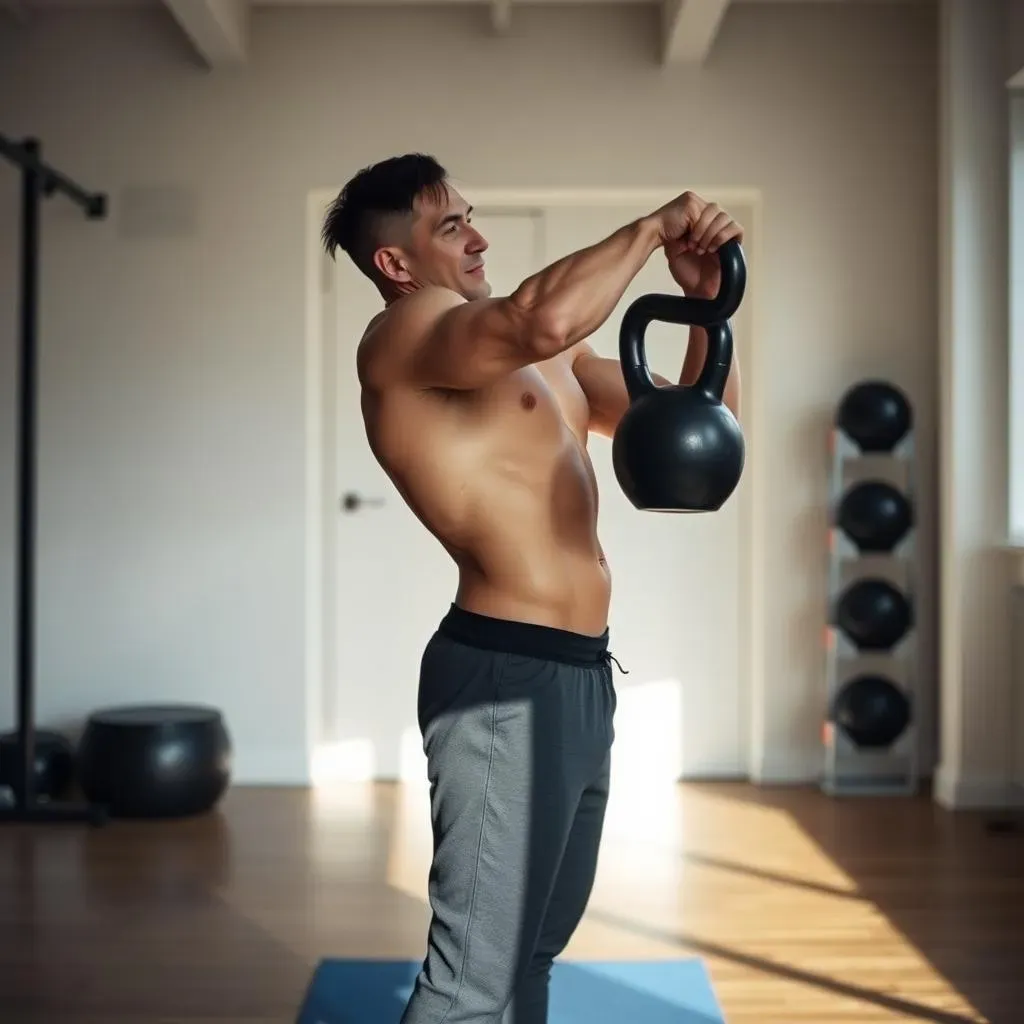Table of Contents
Ever felt like your core is missing something? Like, sure, you can do a million crunches, but are you really hitting those side abs—the obliques? Well, I was there too, until I discovered the power of the oblique kettlebell workout. Forget endless sit-ups; it's time to level up your core game. This isn't just about looking good; it's about building a strong, stable core that helps you in everyday life, from picking up groceries to crushing your fitness goals. We're going to talk about why training your obliques is so important and how kettlebells are your secret weapon. I'll show you the best exercises, how to do them correctly, and even give you a sample routine to get you started. Get ready to feel the burn and see the results. Let's get to work!
Why Train Your Obliques?

Why Train Your Obliques?
Okay, so you're wondering why you should even bother with your obliques? I get it. They're not as flashy as biceps or as obvious as a six-pack, but trust me, they're the unsung heroes of your core. Think of them as the support beams of a building; they're what keeps you stable and strong. Your obliques aren't just about looking good; they're about function. They're involved in every twisting motion you make, like when you're reaching for something on a high shelf or swinging a bat. A strong set of obliques can improve your athletic performance, help you avoid injuries, and make everyday movements feel easier. Ignoring them is like only training half your body. It’s like building a race car with only two wheels. You will be able to go forward, but it will be a bumpy ride.
When you neglect your obliques, it's like leaving a crucial part of your engine untuned. You might be able to move forward but it won’t be smooth. You'll be more prone to back pain, and your overall strength and stability will suffer. And let's be honest, who wants a wobbly core? Training your obliques isn't about endless side bends; it’s about building rotational power and stability. It's about creating a core that can handle whatever life throws at it. So, whether you're an athlete, a weekend warrior, or just someone who wants to move better, your obliques deserve some love. Ready to give them the attention they deserve?
Here's a quick rundown of the benefits:
- Improved core stability
- Reduced risk of back pain
- Enhanced athletic performance
- Better posture
- Increased rotational power
Kettlebell Exercises for Oblique Strength

Kettlebell Exercises for Oblique Strength
Alright, so you're convinced that obliques are important, now let's get into the fun part: how to train them with kettlebells. Kettlebells are fantastic because they're not just about lifting weight; they force your body to stabilize and control the movement. This means your obliques have to work overtime. We're not just talking about simple side bends here. We're talking about movements that challenge your core in all sorts of ways, building strength, stability, and yes, even those defined lines you're after. The best part? You don't need a fancy gym to do it. A kettlebell and a little space are all you need to get started. Let's dive into some key exercises.
We're going to focus on exercises that hit those obliques from different angles, targeting both rotational strength and anti-rotational stability. Think of it like this: some exercises will challenge you to twist against the weight, while others will force you to resist the urge to twist. Both are equally important for a strong, functional core. It's not about just going through the motions; it's about feeling the muscles engage and controlling the kettlebell with precision. So, let's get into the good stuff, I'm going to introduce you to some great kettlebell oblique exercises, each with its own unique way of challenging your core. This is where the magic happens, where you'll start to feel that burn and see those results.
Here are some of my favorite kettlebell exercises for obliques:
- KB Side Plank
- KB Suitcase Hold
- Single Arm Front Rack Carry
- Single Arm KB Farmers Carry
- Single Arm KB Farmers March
Mastering the Kettlebell Oblique Workout

Mastering the Kettlebell Oblique Workout
Control is Key
Okay, so you know the exercises, but now let’s talk about actually *doing* them right. It's not just about swinging a kettlebell around; it's about control, precision, and a well-developed core. Think of your core like the center of a wheel – everything else moves around it. If the center is weak, the rest of the wheel is going to wobble. When you're performing these exercises, I want you to focus on feeling the muscles engage. It’s not about how much weight you can lift, but how well you can control the weight. Start with lighter weights and focus on perfecting your form. You'll be surprised how much harder it is to do an exercise correctly when you’re really focusing on the muscles that are working. This approach will not only help you get stronger, it will also help you avoid injuries.
It's easy to get caught up in the idea of lifting heavy, but with oblique work, it's all about quality over quantity. Are you feeling the muscles working? Are you keeping your core tight? Are you breathing properly? These are the questions you should be asking yourself during each rep. If you’re struggling to maintain proper form, it's a sign that you need to drop the weight and focus on the movement. Remember, we're not trying to show off; we're trying to build a strong, functional core. And that takes time and patience. Think of each rep as an investment in your body. Do it right, and it will pay off.
Progressing Safely
Now, I know you're probably itching to start throwing around heavy kettlebells, but hold your horses. Progression is key, but it has to be smart. Don't jump into the deep end before you know how to swim. Start with lighter weights and focus on mastering the movement first. Once you feel comfortable, then you can slowly start to increase the weight. Pay attention to your body, if you feel any pain, stop. It's better to be cautious and avoid injury than to push too hard and end up sidelined. And don't forget to warm up before you start and cool down after. Your body will thank you for it.
Here are some things to keep in mind:
- Start with lighter weights
- Focus on form over weight
- Engage your core during each movement
- Progress slowly and listen to your body
- Warm up before and cool down after each workout
Specific Exercise Notes
Let's talk about a couple of the exercises in a bit more detail. The KB Side Plank, for example, is an advanced exercise that requires you to have mastered the regular side plank first. Adding a kettlebell to this already challenging exercise increases the load on your obliques. Make sure that you can maintain proper form before attempting this. The Single Arm KB Farmers March is another exercise that requires a lot of balance and stability, not only engages the core but also the foot, the knee, and the hip. Feel how everything has to work together to maintain a stable posture.
These exercises aren't just about your obliques, they engage your entire core. They will challenge your balance, stability, and coordination. It's like a full-body workout disguised as an oblique exercise. So, take your time, focus on the movement, and enjoy the process. You're not just building a stronger core; you're building a better you. It's like tuning an instrument; each adjustment makes the whole thing sound better.
Here are a few things to remember about these movements:
Exercise | Key Points |
|---|---|
KB Side Plank | Master the regular side plank first. Keep your body in a straight line. |
Single Arm KB Farmers March | Keep your core engaged. Maintain a stable posture. Focus on balance. |
Sample Oblique Kettlebell Workout Routine

Sample Oblique Kettlebell Workout Routine
Putting It All Together
Okay, so you've learned the exercises and the importance of control, now let's get into a sample routine. This isn't meant to be a rigid structure, but rather a guide to get you started. Remember, it's not about how fast you can get through it, but how well you can control the movements. We're going for quality over quantity here, so focus on feeling those obliques work. I'm going to give you a simple circuit that you can do 2-3 times a week. It's designed to hit your obliques from different angles, building both strength and stability. Remember to warm up before you start and cool down afterward. Don't skip the warm-up; it's like stretching a rubber band before you use it, it prevents snapping.
This routine is designed to be adaptable. If you find some exercises too easy or too hard, adjust the weight or the variations. The key is to challenge yourself while maintaining proper form. If you're a beginner, start with lighter weights or even just bodyweight until you get the hang of it. Don't be afraid to experiment and find what works best for you. Listen to your body, if you feel any pain, stop and rest. It's better to take a break than to push yourself too hard and risk injury. And remember, consistency is key. It's like learning to play the piano, it takes time and practice to master it. Don't expect results overnight, but if you stick with it, you will see progress.
The Routine
Here's a simple circuit to get you started:
- KB Suitcase Hold: 3 sets of 30 seconds per side
- Pallof Press: 3 sets of 10-12 reps per side
- Cross Chop: 3 sets of 10-12 reps per side
Rest for 60 seconds between sets. Complete 3 rounds.
Remember, this is just a starting point. Feel free to add or modify exercises as you become more comfortable. The goal is to make this workout your own. It's like cooking, you can follow a recipe, but you can also add your own twist to it. Have fun with it and make it something that you enjoy doing.